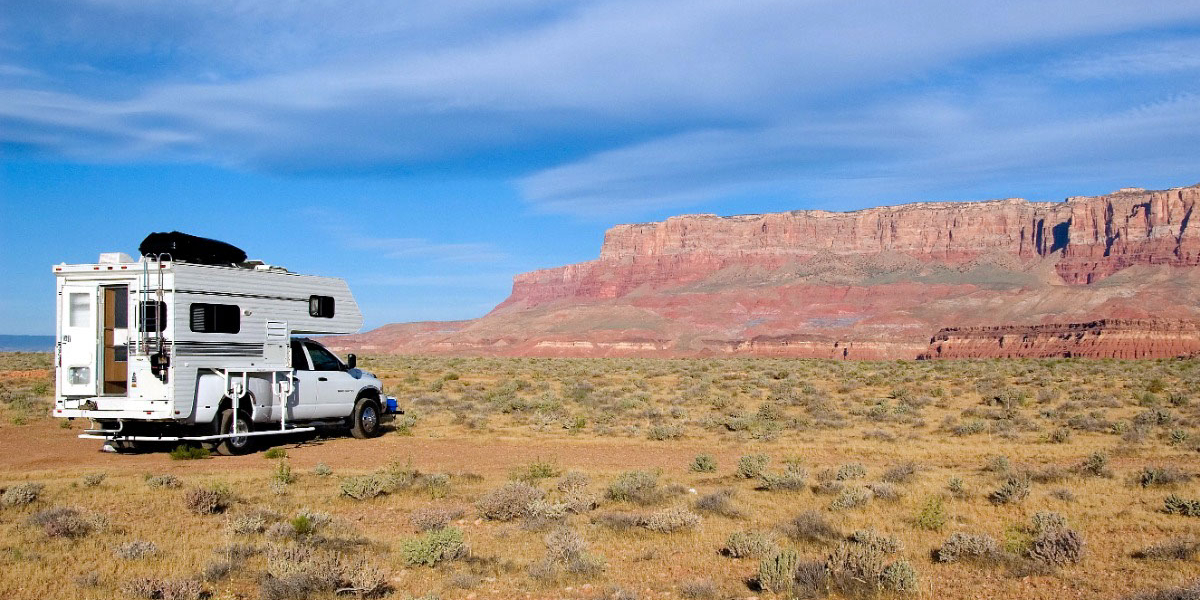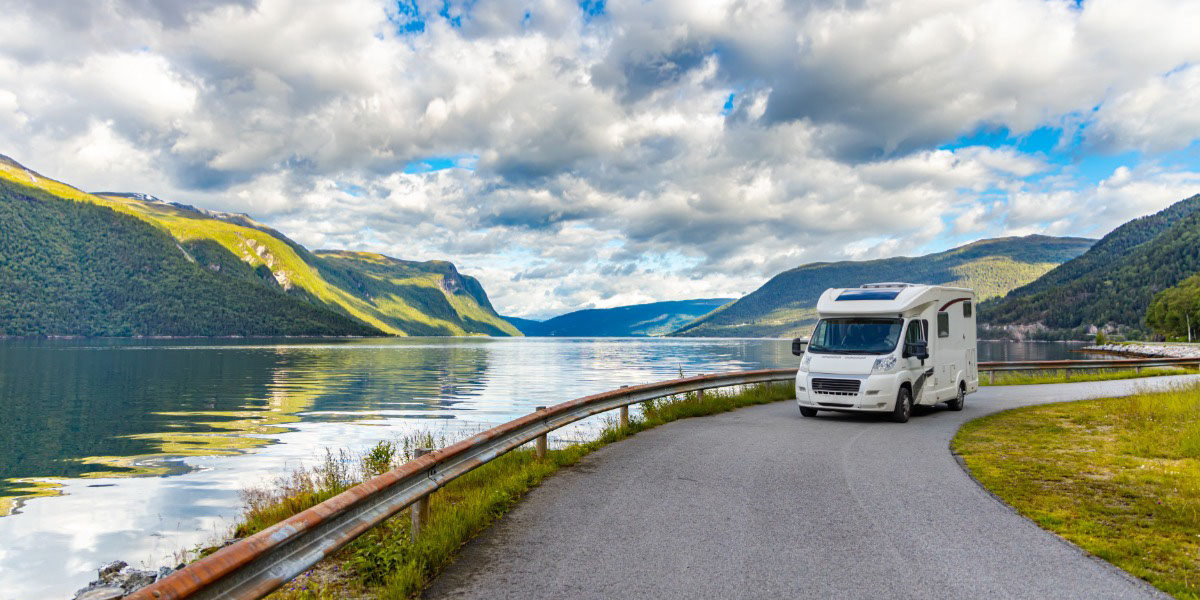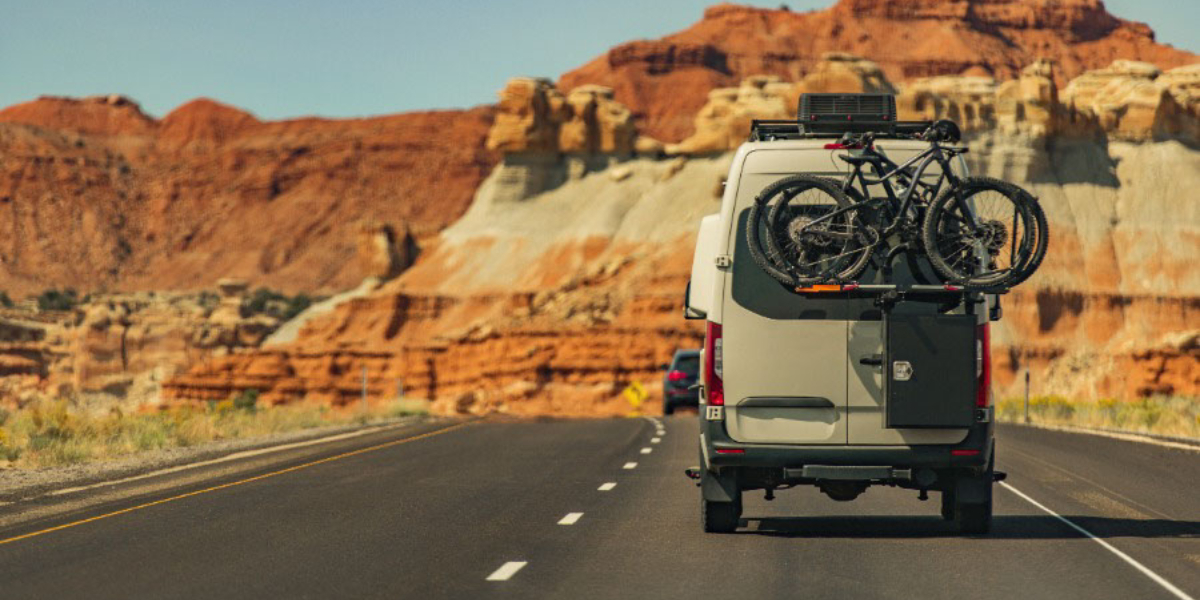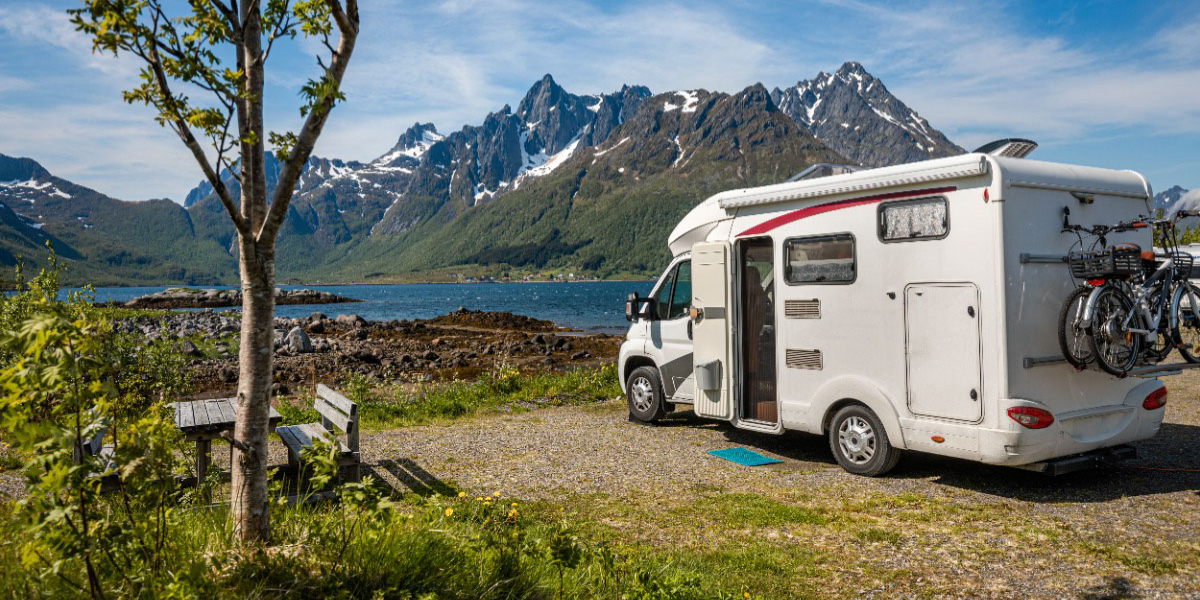Boondocking, or off-grid RVing, is a great way to enjoy camping in natural settings outside of RV parks. While there’s no connection to power, running water (unless there’s a natural spring or stream nearby), sewer hookups, or other amenities, many campers enjoy the boondocking experience for a variety of reasons. RV Trader is breaking down 5 of the best benefits of boondocking in your RV.
1. Plenty of Parking Options
Boondocking can be done on private property (with permission from the owner, of course) or in designated areas offered by commercial land or campground owners. However, boondocking is usually done on national or state public lands where you don’t need permission to set up camp.
These lands are generally available from the Bureau of Land Management (BLM) and on grounds that the United States Forest Service (USFS) defines as national forests and grasslands. If you’re RVing long-term, many BLM lands allow you to stay up to 14 days in one spot. However, you can simply pack up and move down the road to start a new two-week stint, so availability is almost limitless.
2. It’s Free
Boondocking is generally free of charge. If you’re parking your RV van on private land (with permission) for free, it’s generally considered an appropriate gesture to show your gratitude by offering to buy the owner dinner, offer a reciprocal deal if you have something to trade, or present them with a bottle of their favorite libation.
Nonetheless, a nice dinner or bottle of wine will still end up being less expensive than campground or RV park fees and extra charges for electricity, water, and sewer hookups.
If you plan to boondock frequently or for long periods of time, you may want to invest in a generator, solar capabilities, or rechargeable lithium-ion batteries. These require an upfront investment, but they pay for themselves over time.
3. Beautiful Scenery
RV parks are not always attractive places to camp. They might be located near great hiking, swimming, or biking spots, but there’s nothing like being out in the middle of nowhere when your objective is to get away from the noise and quiet your mind.
Boondocking allows for camping in beautiful locations that offer the ultimate peace and solitude. If someone has already claimed a spot that you wanted, just head down the road a bit and you’re bound to find another beautiful spot that’s a good distance from your neighbors.
4. Keep to Yourself, or Connect With Others
Being able to find your own spot for your fifth wheel means you can seek out a quiet location to reconnect with a partner, your family, or yourself. Unless you’re actively seeking out new friends to swap RV stories with, you’re pretty much on your own to connect with nature and the expansive night sky scattered with brilliant stars.
However, if you do want to be around others, boondocking provides an opportunity to find a space large enough for everyone in your party so you can have a communal experience. Boondocking also allows you to skip the campsite reservations and gather with your group in a space that everyone can enjoy.
5. Flexible Travel
In addition to being able to tuck into a lovely forest location or a prime spot on the beach, boondocking has practical applications, too. For example, if you’re on the road and all the campgrounds you find along the way are either full or closed, you can spend the night at a Cracker Barrel, Walmart, Bass Pro Shops, or other retail parking lot that’s RV friendly – but again, always get permission before parking on private property. This can be especially beneficial if an evacuation order is issued for an impending natural disaster and you need to relocate.
Boondocking is also great for when there’s a prolonged power outage at your home (assuming you’re not on the road full-time). If your VW camper is prepared for boondocking, you can just move into the RV until power is restored. You can also use your RV for guest quarters if friends and relatives come to visit and you need more space.
Is boondocking right for you?
One sure way to test out boondocking is to actually go to an RV park or campground first and do a short test-run without plugging in. There are all kinds of tips and tricks to use when conserving water and electricity—as well as what to do with the trash you generate while camping—but if you go through your resources too quickly on your test run, you can always plug in and enjoy the rest of your stay.
Before you head out for your first true boondocking experience, join some social media groups dedicated to boondocking. You’ll find lots of tips and tricks to use while you’re out in the wild, and you’ll also have a great resource to find exciting and wonderful places to go. If you’re still searching for the perfect camper for your boondocking adventures, check out our nationwide inventory of new and used RVs on RVTrader.com.
By Barrett Baker




